A Study on the Surface Quality of Selective Laser Melted Cylindrical- and Parallelepipedic-Shaped Inner Structure
Abstract
1. Introduction
2. Materials, Instruments, and Experiment
2.1. Materials
2.2. Instrument
2.3. Forming Quality Test
3. Results and Discussion
4. Conclusions
Author Contributions
Funding
Informed Consent Statement
Data Availability Statement
Conflicts of Interest
References
- Kang, D.-S.; Park, S.-H.; Son, Y.; Yeon, S.-M.; Kim, S.H.; Kim, I.-Y. Multi-lattice inner structures for high-strength and light-weight in metal selective laser melting process. Mater. Des. 2019, 175, 107786. [Google Scholar] [CrossRef]
- Agapovichev, A.V.; Sotov, A.V.; Kyarimov, R.R.; Alexeev, V.P.; Smelov, V.G.; Sufiiarov, V.S.; Masaylo, D.V. The investigation of microstructure and mechanical properties of tool steel produced by selective laser melting technology. IOP Conf. Ser. Mater. Sci. Eng. 2018, 441, 012003. [Google Scholar] [CrossRef]
- Liao, B.; Xia, R.F.; Li, W.; Lu, D.; Jin, Z.M. 3D-Printed Ti6Al4V scaffolds with Graded triply periodic minimal surface structure for bone tissue engineering. J. Mater. Eng. Perform. 2021, 30, 4993–5004. [Google Scholar] [CrossRef]
- Yu, Y.; Wang, M.; Bai, Y.; Zhang, B.; An, L.; Zhang, J.; Zhong, B. Tuning the inner hollow structure of lightweight amorphous carbon for enhanced microwave absorption. Chem. Eng. J. 2019, 375, 121914. [Google Scholar] [CrossRef]
- Duan, W.P.; Wu, M.P.; Han, J.T. Effect of laser rescanning on Ti6Al4V microstructureduring selective laser melting. Proc. Inst. Mech. Eng. Part B J. Eng. Manuf. 2020, 235, 763–771. [Google Scholar] [CrossRef]
- Feng, Q.; Tang, Q.; Liu, Z.; Liu, Y.; Setchi, R. An investigation of the mechanical properties of metallic lattice structures fabricated using selective laser melting. Proc. Inst. Mech. Eng. Part B J. Eng. Manuf. 2016, 232, 1719–1730. [Google Scholar] [CrossRef]
- Antony, K.; Reghunathan, R.T. Study on selective laser melting of commercially pure titanium powder. Proc. Inst. Mech. Eng. Part B J. Eng. Manuf. 2018, 233, 1794–1807. [Google Scholar] [CrossRef]
- Malaya, P.B.; Troy, D.; Sarat, S. Selective laser melting of stainless steel and silicon nitride fibre metal matrix composites. Proc. Inst. Mech. Eng. Part B J. Eng. Manuf. 2020, 234, 1513–1525. [Google Scholar]
- Gourav, K.S.; Piyush, P.; Prashant, K.J.; Pavan, K.K.; Puneet, T. On the suitability of induction heating system for metal additive manufacturing. Proc. Inst. Mech. Eng. Part B J. Eng. Manuf. 2020, 235, 219–229. [Google Scholar]
- Thijs, L.; Verhaeghe, F.; Craeghs, T.; Van Humbeeck, J.; Kruth, J.-P. A study of the microstructural evolution during selective laser melting of Ti-6Al-4V. Acta Mater. 2010, 58, 3303–3312. [Google Scholar] [CrossRef]
- Chen, Z.; Wu, X.; Tomus, D.; Davies, C.H. Surface roughness in selective laser melted Ti-6Al-4V alloy components. Addit. Manuf. 2018, 21, 91–103. [Google Scholar] [CrossRef]
- Wang, D.; Shu, Z.M.; Dong, M.X.; Yang, Y. Surface quality of the curved overhanging structure manufactured from 316-L stainless steel by SLM. Int. J. Adv. Manuf. Technol. 2016, 86, 781–792. [Google Scholar] [CrossRef]
- Kai, Q.Z.; Geng, D.C.; Liang, X. Topology optimization considering overhang constraint in additive manufacturing. Comput. Struct. 2019, 212, 86–100. [Google Scholar]
- Zhang, K.; Fu, G.; Zhang, P.; Ma, Z.; Mao, Z.; Zhang, D.Z. Study on the geometric design of supports for overhanging structures fabricated by selective laser melting. Materials 2019, 12, 27. [Google Scholar] [CrossRef]
- Liu, Y.; Yang, Y.; Wang, D. A study on the residual stress during selective laser melting (SLM) of metallic powder. Int. J. Adv. Manuf. Technol. 2016, 87, 647–656. [Google Scholar] [CrossRef]
- Wang, D.; Yang, Y.; Yi, Z.; Su, X. Research on the fabricating quality optimization of the overhanging surface in SLM process. Int. J. Adv. Manuf. Technol. 2013, 65, 1471–1484. [Google Scholar] [CrossRef]
- Chen, H.; Gu, D.; Xiong, J.; Xia, M. Improving additive manufacturing processability of hard-to-process overhanging structure by selective laser melting. J. Mater. Process. Technol. 2017, 250, 99–108. [Google Scholar] [CrossRef]
- Patterson, A.E.; Messimer, S.L.; Farrington, P.A.; Carmen, C.L.; Kendrick, J.T. Practical DOE-based approach for predicting impact of stress and deformation in SLM overhanging features during product design. engrXiv 2018, preprint. [Google Scholar]
- Wu, G.; Liu, T.; Zhang, C.; Liao, W. Research on forming quality of overhanging structure by selective laser melting. China Mech. Eng. 2016, 27, 1810–1815. [Google Scholar]
- Duan, S.Q.; Liu, T.T.; Liao, W.H.; Zhang, C.D.; Yang, T. Research on forming quality of overhanging round hole by selective laser melting. Chin. J. Lasers 2018, 45, 0402007. [Google Scholar] [CrossRef]
- Kajima, Y.; Takaichi, A.; Nakamoto, T.; Kimura, T.; Kittikundecha, N.; Tsutsumi, Y.; Nomura, N.; Kawasaki, A.; Takahashi, H.; Hanawa, T.; et al. Effect of adding support structures for overhanging part on fatigue strength in selective laser melting. J. Mech. Behav. Biomed. Mater. 2018, 78, 1–9. [Google Scholar] [CrossRef] [PubMed]
- Leary, M.; Mazur, M.; Watson, M.; Boileau, E.; Brandt, M. Voxel-based support structures for additive manufacture of topologically optimal geometries. Int. J. Adv. Manuf. Technol. 2019, 105, 1–26. [Google Scholar] [CrossRef]
- Zhang, Z.; Wu, C.; Li, T.; Liang, K.; Cao, Y. Design of internal branch support structures for selective laser melting. Rapid Prototyp. J. 2018, 24, 764–773. [Google Scholar] [CrossRef]
- Hintze, W.; von Wenserski, R.; Junghans, S.; Möller, C. Finish machining of Ti6Al4V SLM components under consideration of thin walls and support structure removal. Procedia Manuf. 2020, 48, 485–491. [Google Scholar] [CrossRef]
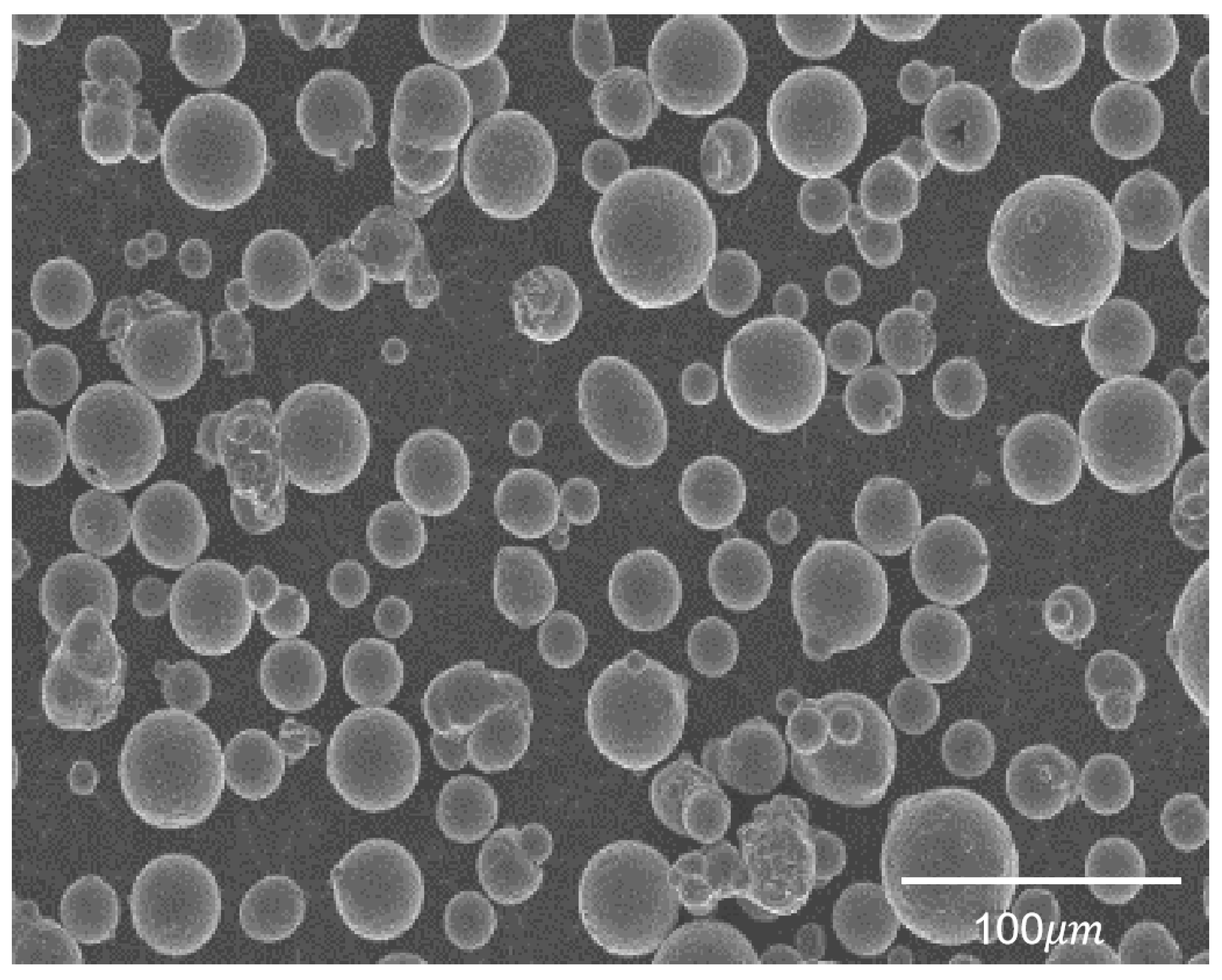
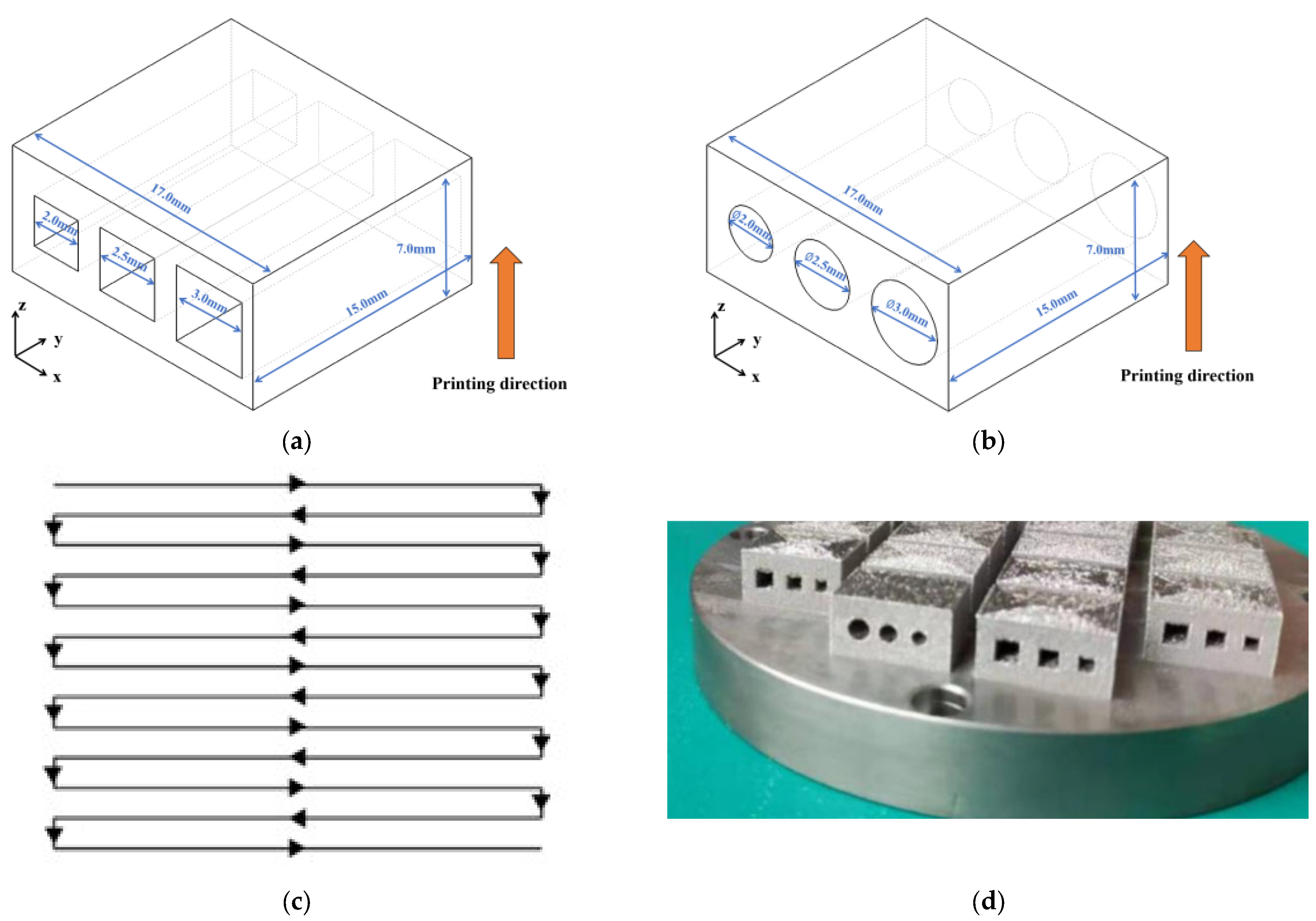

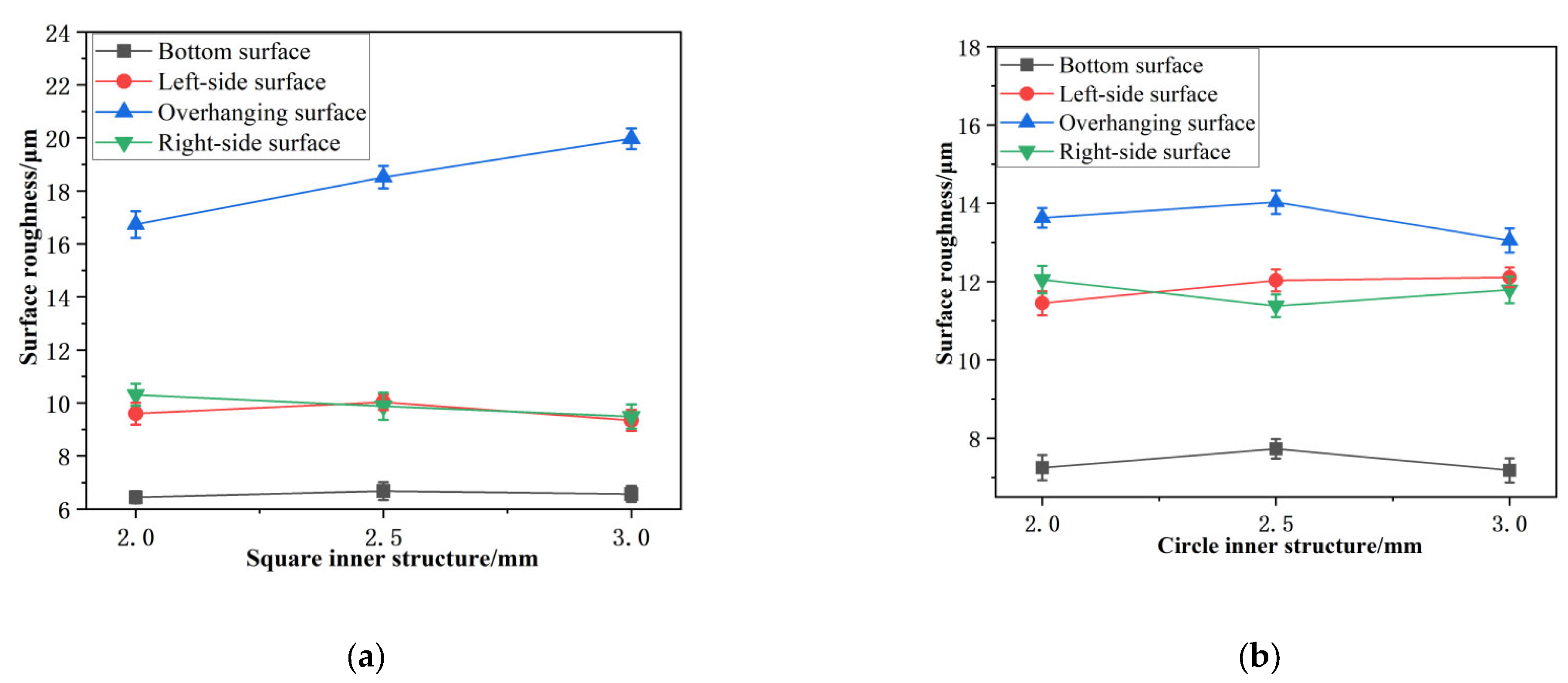
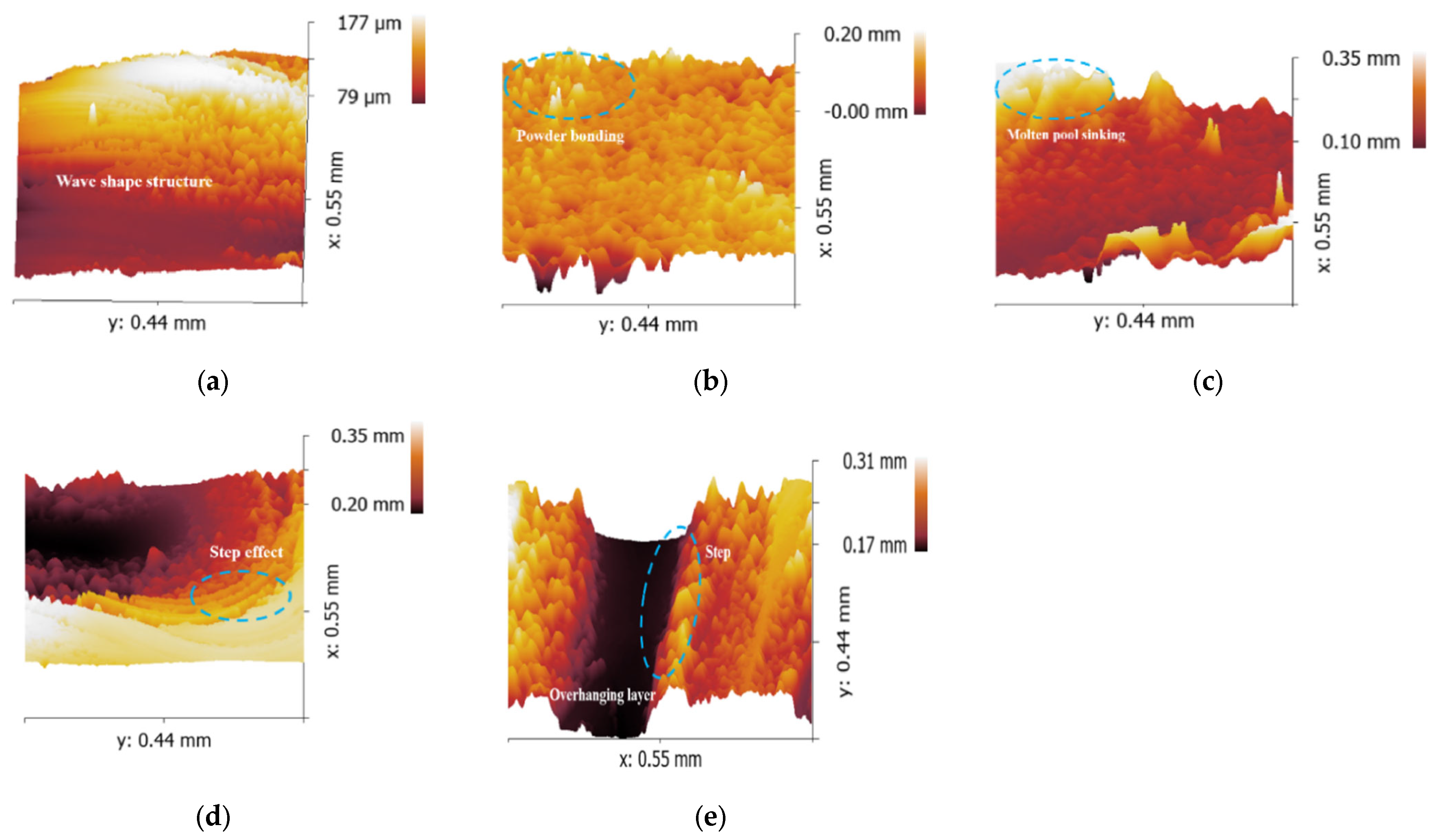
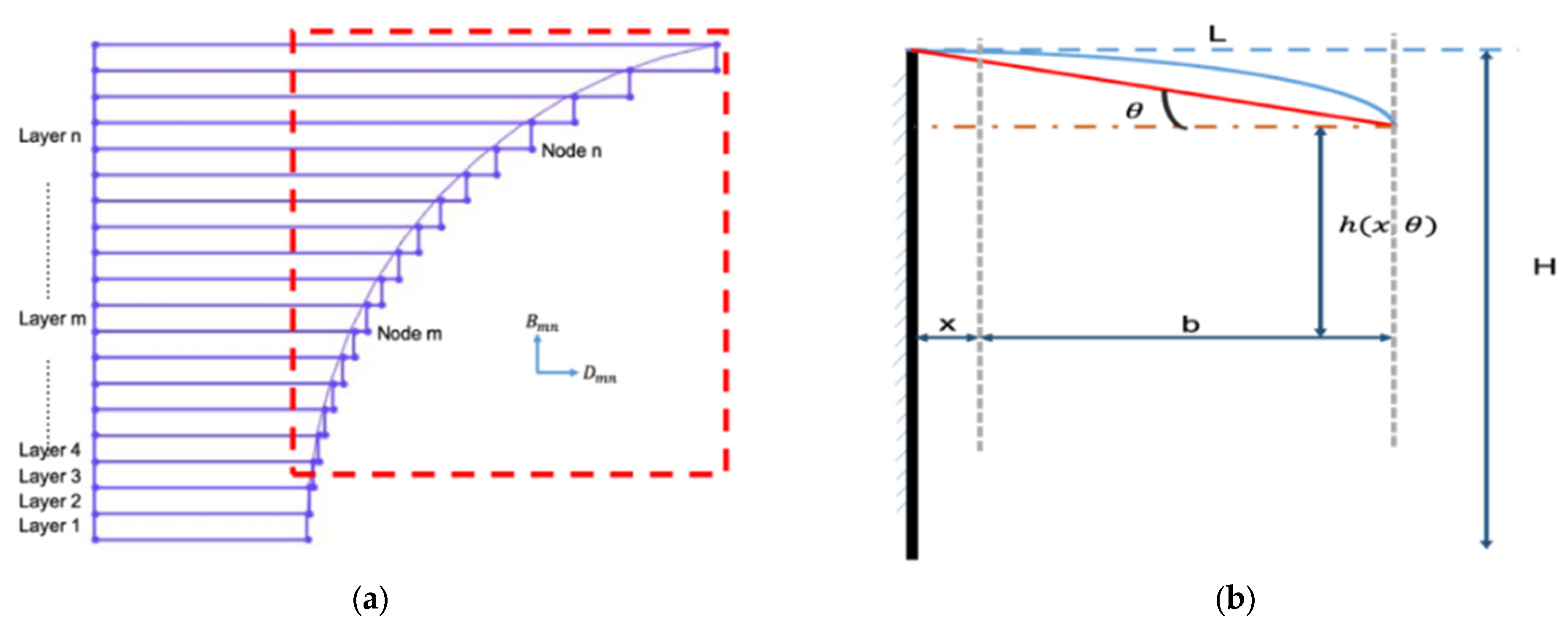

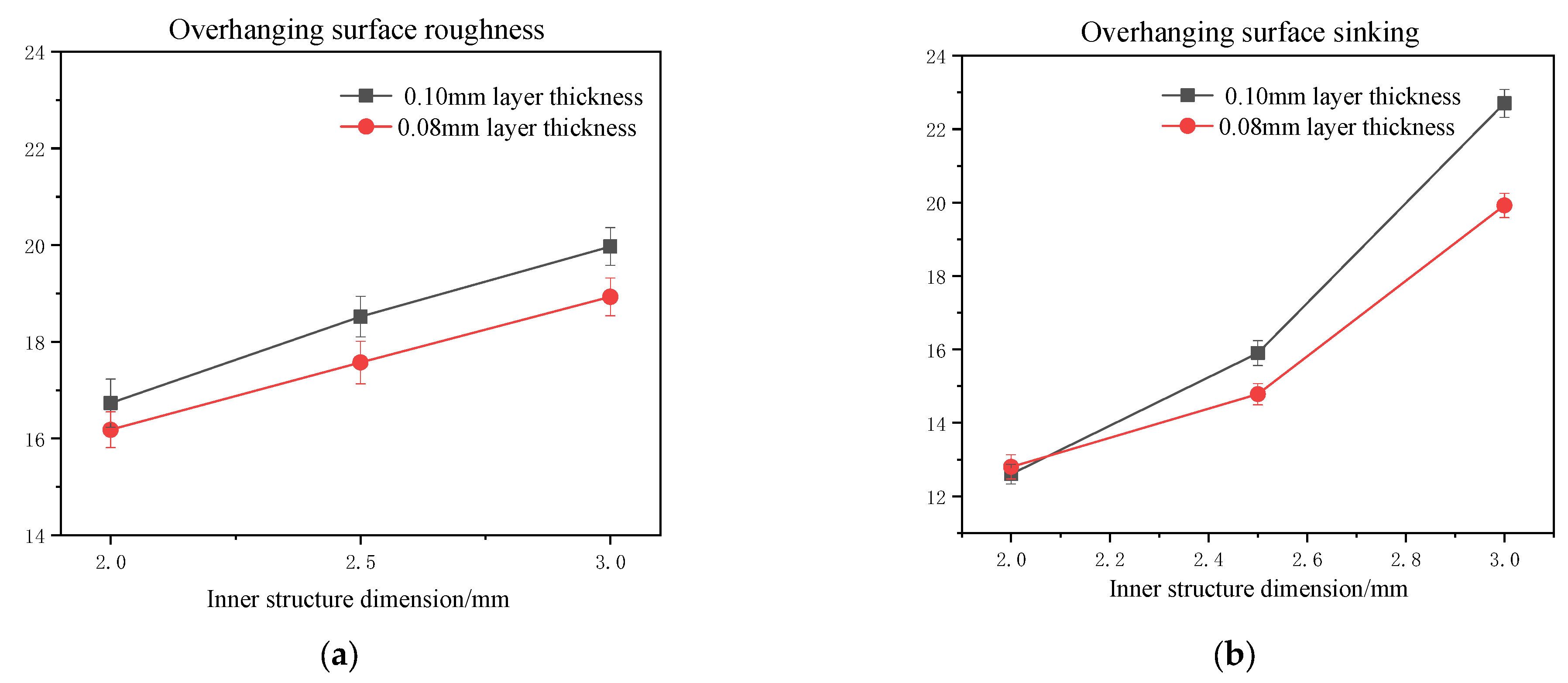
| TC4 | Sphericity | Flowability/s | Particle Size/μm | Element Content/% | ||||||||
|---|---|---|---|---|---|---|---|---|---|---|---|---|
| D10 | D50 | D90 | O | N | H | C | Al | V | Ti | |||
| Value | 0.983 | 12.6 | 16.9 | 19.2 | 22.5 | 0.176 | 0.024 | 0.0064 | 0.010 | 5.74 | 3.83 | Bal |
| Laser Power | Scan Speed | Layer Thickness | Hatch Spacing | Spot Diameter | Scanning Strategy | Protective Gas |
|---|---|---|---|---|---|---|
| 180 W | 1000 mm/s | 0.12 mm | 0.10 mm | 80 m | Single | Argon |
| Inner Structure/mm | Parallelepipedic-Shaped/μm | Deviation/μm | Cylindrical-Shaped/μm | Deviation/μm |
|---|---|---|---|---|
| 2.0 | 12.6 | 1.3 | 9.3 | 0.8 |
| 2.5 | 15.9 | 1.8 | 10.2 | 1.1 |
| 3.0 | 22.7 | 2.5 | 8.9 | 1.1 |
| Inner Hole/mm | Flatness of Parallelepipedic-Shaped Inner Hole/mm | Cylindrical-Shaped Inner Hole/mm | ||||||||
|---|---|---|---|---|---|---|---|---|---|---|
| Bottom | Deviation | Left Side | Deviation | Overhanging | Deviation | Right Side | Deviation | Roundness | Deviation | |
| 2.0 | 0.073 | 0.01 | 0.085 | 0.02 | 0.102 | 0.02 | 0.083 | 0.01 | 0.102 | 0.03 |
| 2.5 | 0.070 | 0.02 | 0.083 | 0.02 | 0.115 | 0.02 | 0.082 | 0.02 | 0.093 | 0.02 |
| 3.0 | 0.072 | 0.02 | 0.080 | 0.02 | 0.126 | 0.02 | 0.082 | 0.03 | 0.110 | 0.03 |
Disclaimer/Publisher’s Note: The statements, opinions and data contained in all publications are solely those of the individual author(s) and contributor(s) and not of MDPI and/or the editor(s). MDPI and/or the editor(s) disclaim responsibility for any injury to people or property resulting from any ideas, methods, instructions or products referred to in the content. |
© 2023 by the authors. Licensee MDPI, Basel, Switzerland. This article is an open access article distributed under the terms and conditions of the Creative Commons Attribution (CC BY) license (https://creativecommons.org/licenses/by/4.0/).
Share and Cite
Mao, Y.; Lv, X.; Shen, X. A Study on the Surface Quality of Selective Laser Melted Cylindrical- and Parallelepipedic-Shaped Inner Structure. Materials 2023, 16, 4649. https://doi.org/10.3390/ma16134649
Mao Y, Lv X, Shen X. A Study on the Surface Quality of Selective Laser Melted Cylindrical- and Parallelepipedic-Shaped Inner Structure. Materials. 2023; 16(13):4649. https://doi.org/10.3390/ma16134649
Chicago/Turabian StyleMao, Yuyi, Xinfeng Lv, and Xiaodong Shen. 2023. "A Study on the Surface Quality of Selective Laser Melted Cylindrical- and Parallelepipedic-Shaped Inner Structure" Materials 16, no. 13: 4649. https://doi.org/10.3390/ma16134649
APA StyleMao, Y., Lv, X., & Shen, X. (2023). A Study on the Surface Quality of Selective Laser Melted Cylindrical- and Parallelepipedic-Shaped Inner Structure. Materials, 16(13), 4649. https://doi.org/10.3390/ma16134649






